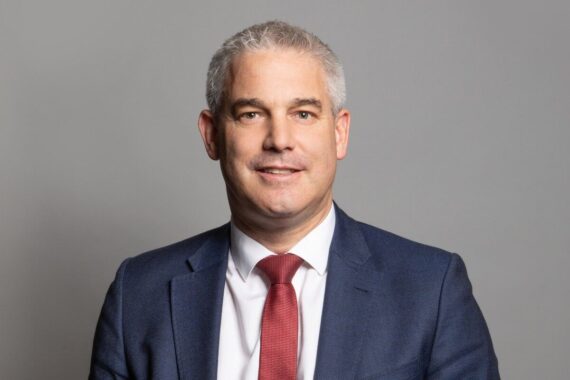Sunak ‘drops 6,000 GP recruitment target from health secretary brief’

The new Prime Minister has omitted the target of recruiting 6,000 more GPs from his brief for the health secretary, a newspaper has claimed.
The target was a 2019 manifesto commitment from the Conservative Party at the last election, but last year then-health secretary Sajid Javid admitted that the Government will fail to fulfil the election pledge.
Now the Guardian has reported that Rishi Sunak’s appointment letter to health secretary Steve Barclay quietly dropped the target to recruit 6,000 more GPs in England by the end of 2024.
The official appointment letter – seen by the Guardian – set out expectations for what the health secretary should deliver by March 2024, it said.
But while it included key health pledges from the manifesto such as 50,000 more nurses and the delivery of ‘new’ hospitals, the GP recruitment pledge was ‘notably absent’, the newspaper claimed.
The letter said that the party’s manifesto commitments should be ‘the foundation of our priorities’ and that the health secretary should ‘grip delivery of key manifesto commitments to build a stronger NHS and social care system’, according to the report.
It added that the letter said: ‘These are the promises on which we were elected, for which the people gave us a mandate, and on which we must make good.’
The BMA said that the Government should have the ‘good grace to openly admit’ it has failed in it GP manifesto commitment rather than ‘pulling the wool over our eyes’.
BMA GP Committee deputy chair Dr Kieran Sharrock said: ‘If these reports are true, the health secretary has been dispensed of the ultimate humiliation of admitting that the Government has failed in its manifesto commitment to grow the GP workforce by 6,000 GPs by 2024.
‘The Government should have the good grace to openly admit this rather than quietly dropping the commitment from Steve Barclay’s task list.’
He added: ‘Since the Government first pledged to grow the GP workforce, practices have been decimated by workforce shortages, with GPs and their patients suffering the consequences.
‘It is becoming increasingly clear that the cavalry is not coming. We are haemorrhaging doctors in general practice as GPs leave the profession or reduce their hours to manage unsustainable workloads.
‘Ultimately, GPs and patients deserve more than broken promises. Instead of pulling the wool over our eyes, the Government should be open that it is failing in its manifesto pledge and talk to GPs about the solutions – to do nothing threatens to make this situation far, far worse.’
A Department of Health and Social Care (DHSC) spokesperson told Pulse that while it recognises that ‘growing the GP workforce is challenging’, the Government ‘remains committed to increasing the number of doctors in general practice’.
They added: ‘There were nearly 2,300 more full-time equivalent doctors working in general practice in September 2022 compared to the same time in 2019 and a record-breaking number started training as GPs last year.
‘We are also making 4,000 training places available for GPs each year to help create an extra 50 million appointments a year.’
The Government has also commissioned NHS England to develop a long-term workforce plan to help recruit and retain more staff, they said.
Last month, the BMA said that the Government ‘should not be proud of’ small increases in the number of full-time fully-qualified GPs, amid a rise of 50 GPs between July and September this year.
The latest data showed that the number of full-time fully-qualified GPs has dropped by 1,800 in the last seven years.
And the BMA recently warned that there has been a 16% rise in the number of patients per full-time equivalent (FTE) GP in the past seven years.
Meanwhile, the GMC has announced radical new proposals that will enable thousands of secondary care SAS doctors to enter general practice in a bid to solve the workforce crisis.
Related Articles
READERS' COMMENTS [5]
Please note, only GPs are permitted to add comments to articles










Am sure they will be “doubling down” on their commitment. I hear the plan is for 2 FTE GPs for every single person in the UK to be delivered by 2027 😩
Actually 6001 as it’s a 2 finger salute from me on 31/12/22
Have diary and crossing the days off (wonder why)
“They added: ‘There were nearly 2,300 more full-time equivalent doctors working in general practice in September 2022 compared to the same time in 2019 and a record-breaking number started training as GPs last year.”
According to NHSD, there are just 565 more FTE GPs in 2022 than 2019 (35,273 and 34,708 respectively), not 2,300 more!
The representative figure is for FTE GPs excluding registrars and locums (26,805 and 26,928 respectively), which is 123 fewer GPs since 2019.
Where do DHSC get their figures from?
Try not to lose 6,000 GPs to private sector. New brief.
I don’t think we need too many more GPs to achieve expanded capacity in Primary Care. I would open up access to a wide range of qualified caters, depending on what the patient or carer believes to be the problem. This would provide a wider choice for patients and hopefully shorter waits. It would remove that demand from GPs to release time for problems that require continuity of care.
To do this GP needs to ditch the exclusive list system. Have anamed GP by all means for long standing or taboo issues, but allow choice of GP where same day access is priority. Allow people to see any available GP or primary care clinician locally. This done not need to be confined to a single practice.
Shared records can allow this while keeping information continuity. The demand will be spread to all providers and allow GPs to focus of continuity for those cases that need it.
Of course this may require more GPs and certainly more primary care providers